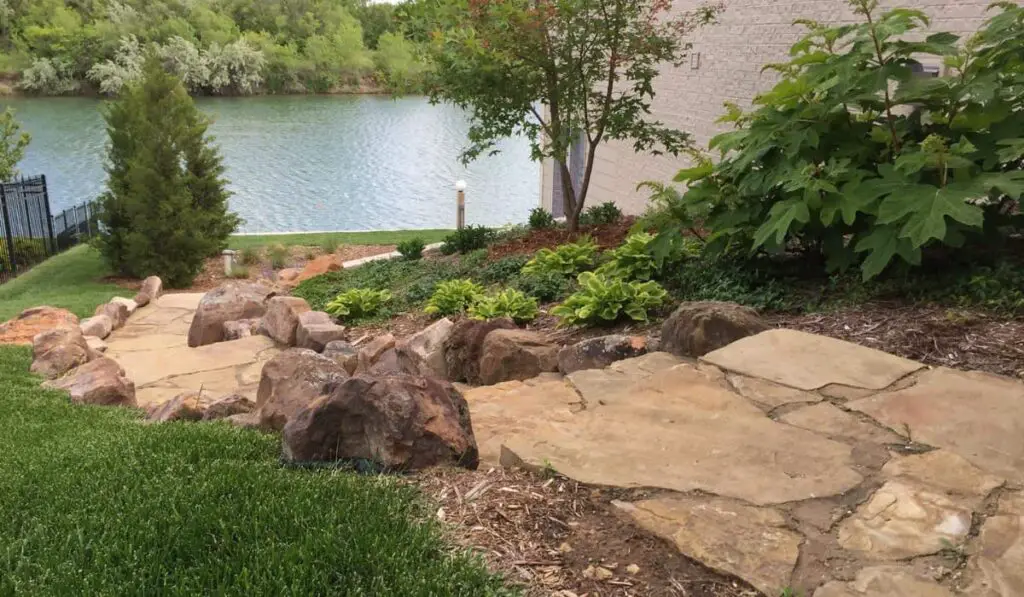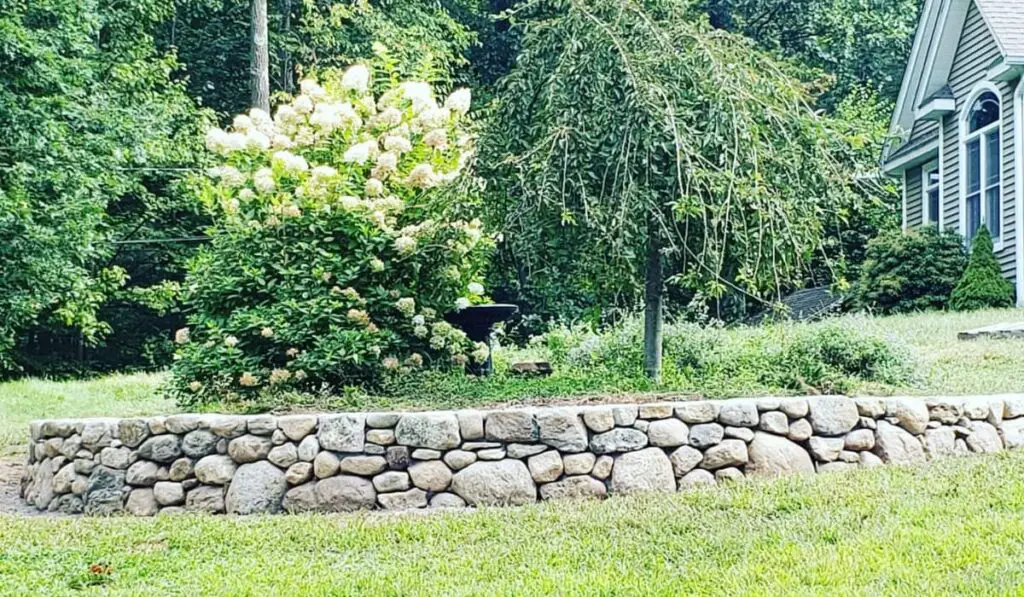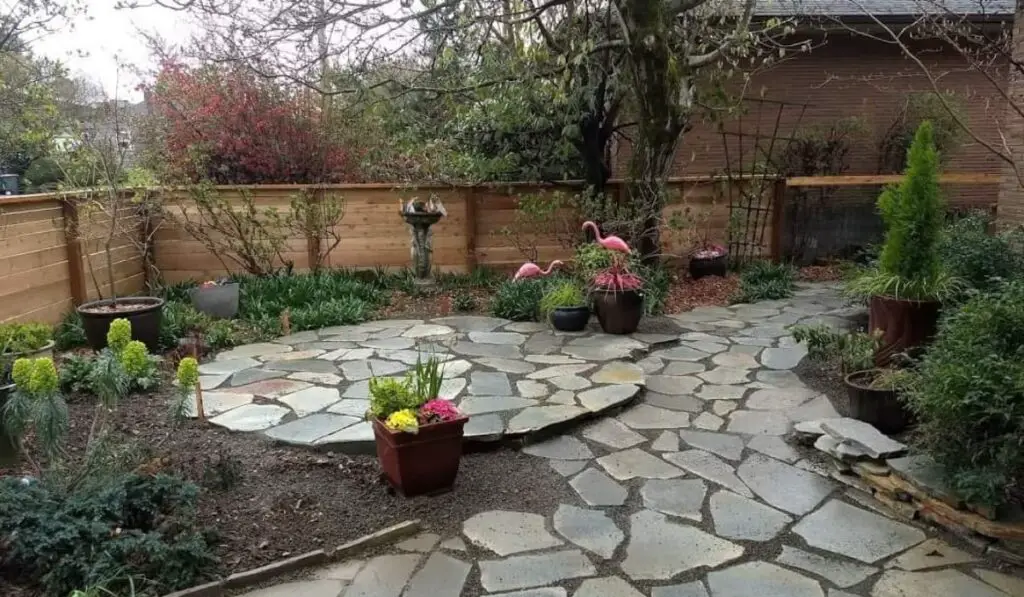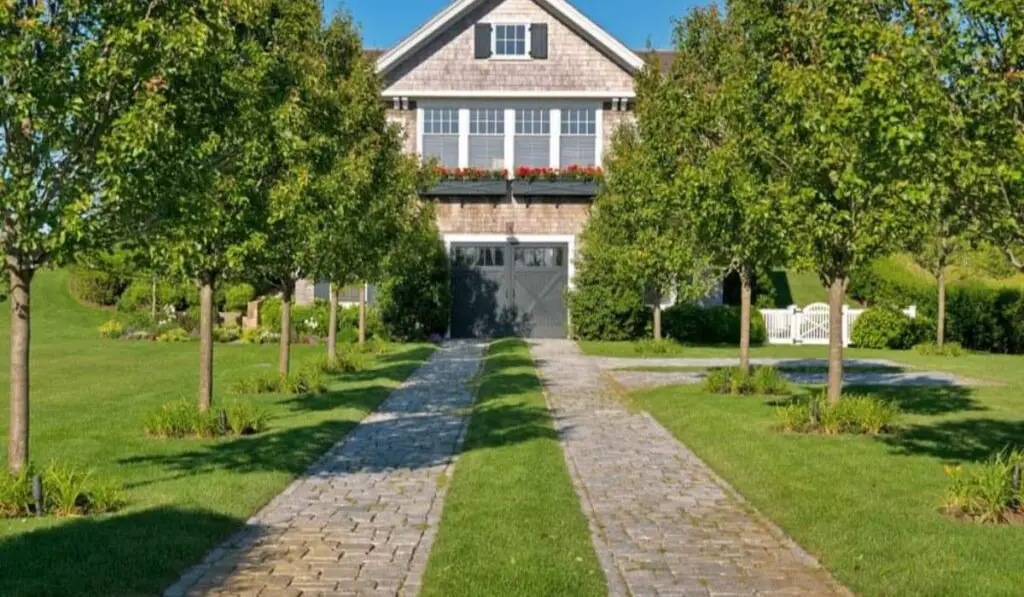Using natural elements for decoration is an ancient form of art that’s been around since early cave dwellers carved pictures with stones. In modern times, you have options to explore various types of lawn, yard, or garden ideas, and among them are best rocks for landscaping.
Using rocks adds a unique touch to your landscape, giving it a distinct appearance. You can use rock designs for paths or fountain decoration, gazebos, decks, steps, and other decorative aspects.
Rocks are natural, durable, require little maintenance, and are a time-tested hardscape material accenting features such as plants or dirt patches. But it can be overwhelming to pick the right rock combination that matches landscaping aspects such as the size, function, and style.
Read on to learn how you’ll sift through the diversity and versatility of the types of landscape rocks.
Contents
What Are the Six Best Rocks for Landscaping?
As a landscape material, rocks are maintenance-free and a viable ‘once for all solution’ and one that is pocket-friendly. The mind-blowing rock variety also makes your landscaping design options almost limitless.
You can choose rocks for their color and size or choose a mix and match situation that is best compatible with the type of plants or landscape. From the largest to the smallest, the options for ideal landscaping rocks include:
Landscaping Boulders
A boulder is any rock that exceeds a foot in diameter or one that’s too heavy for you to move without another person’s aid.
Boulders are best for accenting landscape features you want to show up from far. As one of the best landscape rock types, boulders can be flat-sided or rounded, cutting across wide varieties like limestone, quartzite, marble, or granite.
Landscaping boulders cost about $100 per ton. This rock’s price might vary depending on availability, where you’re shopping, and professional delivery to your property.
You can utilize these types of landscape rocks in the following ways.
- Pillar-like boulders on either side of your driveway and with a color that accents feature in your yard or house
- Terrain boulders that hold enough ground behind to support a slight incline
- Buried boulders that fit in with the natural surface of your garden and its foliage
- Flat boulders or slabs that act as outdoor path flagstones or steps
- Stone cut and plumbed boulder as a central feature in your garden fountain

Fieldstone
Fieldstone is among the best rocks for landscaping. It’s where this rock originates from that gives its name fieldstone, and not to any geological formation classification.
In the past, when farmers in the rocky country would encounter a lot of rocks when plowing their fields, they’d pile them away from the arable land.
While placing them at strategic points was a way of getting rid of these rocks, needs often arose, and piles got harvested to build a wall or partition.
As such, fieldstone is best suited to stone retaining walls, whether mortared or mortar-less, but they also work well as stepping stones for your garden path.
Fieldstone is heavy, often rounded, and found in stone yards or home improvement stores. If you choose a ubiquitous local rock variety in your area, this landscaping material won’t be costly.
Such features make the fieldstone the best rock for landscaping.

Flagstone
Sedimentary rocks, usually quarried in flat slabs, make up the class of landscaping material called flagstones.
Flatstones’ flatness and durability make them the best rocks for patios and walkways. You can complement your landscape or house color with a mix of flagstone colors or choose a monochrome patio or walkway.
Flagstones are one of the best landscaping rocks available from home improvement centers and stone yards.
Flagstones cost approximately $2-$6 per square foot. While inexpensive, flagstones are labor-intensive to install. You may end up paying $15-$20 per square foot if you include labor costs.

Cobblestone
Cobblestones are an irresistible choice for your landscaping design. There’s a traditional charm that cobblestones exude, given they’ve been in use since the 3rd century.
Also called Belgian blocks, cobbles come from limestone, granite, and basalt cut into rectangular shapes.
Whatever rock variety, cobblestones make durable pavers you will likely never replace. They’re uniquely shaped, easy to maintain, weather and stain resistant, and suitable for walkways, patios, water features, and garden borders.
A square foot of cobblestones costs about $10-$20. Actual costs might depend on the stone type, job size, transportation, and labor.
Cobblestones are costly, and you should weigh their benefits against price to see if they’re the best landscape rock types for you.
Cobblestones’ uneven surfaces can also prove challenging for very young and older people with unsteady legs. These stones are a nightmare during snow shoveling.

Landscaping Lava Rocks
Lava rocks are misshapen, rough, burnt red stones that are popular among landscapers.
Also known as volcanic rocks, landscaping lava rocks are porous, making them suited to drainage areas in your lawn or garden.
Lava rocks can replace mulch in flower beds or add color to walkways and borders.
Besides explosively bold colors, lava rocks provide an accent to any landscape design while suppressing weed growth.
Lightweight and easy to install, lava stones absorb heat during the day and release it at night, making them ideal for dry climates.
Landscape lava rock won’t wash away even during floods as it sinks into the soil. However, its light reflective attributes mean it will increase the temperature around your plants.
River Rocks
Smoothed and rounded by water, landscape river rocks come in all sizes, from boulders to gravel.
River rocks have the aesthetic appeal of being formed by nature.
You can use river stones to address drainage issues in areas where water collects or where it flows into a pool nearest to your house.
Besides creek beds, fountains or basins, you can use river rocks to accent features like boulders and fences since they won’t move around like smaller gravel. River stones aren’t recommended for foot traffic areas.
Final Thoughts
The mentioned best rocks for landscaping are available in stone yards, home improvement stores, farms, and quarries in the countryside.
Other than using them as a centerpiece on their own, you can also accent other landscape features with these stones, use them as steps, walkways, benches or build retaining walls.
Hello! My name is Chris, and I am the founder of Yard Floor. When I was a toddler, my family had a lush green lawn. I was at the center of caring for and maintaining this lawn and even proceeded to take an associate’s Degree in landscaping. I am here to share my years of experience with you – be it repairing your mower/tractor or caring for your lawn.